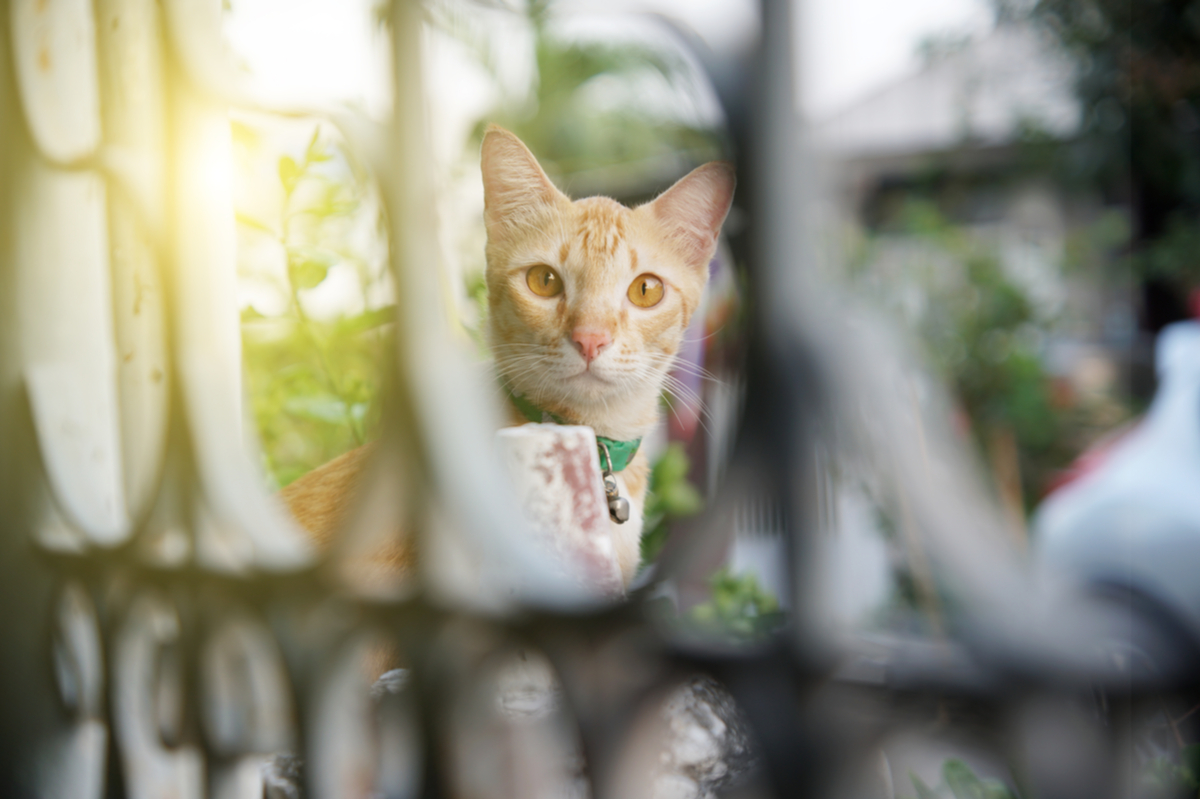If you have a mischievous cat who likes to get into things they shouldn’t, are introducing a new pet into the home, or just want to give your cat some space of their own, a cat gate could be the solution to these and dozens of other situations. Using a cat gate indoors can increase the safety and the versatility of your home, helping to keep your cat healthy and happy. While gates are often used for dogs, they also play an important role for cats, too.

Reasons to get a cat gate
You can put a cat gate to use in your home in many different ways. A gate can help to keep your cat out of an area that’s dangerous or that you don’t want them in. It is recommended when you are kitten proofing your home. By putting a gate in a doorway, you can leave a door open for ventilation, heat circulation, or just to keep the spaces feeling more connected. A gate can also be a practical solution for areas where you don’t have a door to close, and many pet owners put pet gates around Christmas trees, fireplaces, and other heating elements.
Gates also play important roles in helping to separate your furry family animals. Using a pet gate can give your cat some space in the home exclusively, so they can retreat away from the family dog when some quiet time is needed. Installing pet gates in doorways can allow a new pet to meet your current pets with a safe barrier between them. This setup can make for safer and more gradual introductions.
Pros and cons of cat gates
Cat gates definitely have their advantages and disadvantages. With any gate, you’re creating a barrier in your home that you’ll need to navigate. Many gates now come equipped with swinging doors, so you can step through them, rather than over them. Still, these doors will require that you have a free hand to open them. If you have small children in the home, a parent will need to be available to open the gate each time they pass through. This can also be a benefit, though, since it can potentially help to keep kids out of areas, too.
If you’re using a gate to prevent a dog from accessing your cat’s space, then a single gate in a doorway may be all you’ll need. But cats have the advantage of being able to jump and climb, and that can pose a challenge with gates that are only a few feet tall. Depending on your cat’s athleticism and determination, he may jump right over a gate, meaning that you have to install multiple gates vertically in a doorway to truly keep your cat out of an area.
Cat gates will also have a visual impact on your home. Some homeowners don’t think they’re aesthetically pleasing, but there are also beautiful wooden gates available that coordinate with many home-decor schemes.
Choosing the right cat gate
When choosing a cat gate for your home, consider factors like:
- Whether you need to prevent your cat from climbing or jumping over the gate
- Whether the gate is in an area you frequently pass through, and if a gate with a door within it would be helpful
- The size of the space that you need the gate to fit, as well as the desired gate height
- The overall aesthetic that you want the gate to have
- The type of installation you desire
- The size of other pets in your home and the strength that a gate will need to have
- Whether you want the gate to be made of any certain materials, like eco-friendly bamboo
It’s also important to consider how you’ll be using the gate. Freestanding gates can be used to surround and block off smaller objects or areas. They also don’t require any sort of installation. These types of gates are easily portable, but they won’t provide the type of secure barrier that could keep an excited dog or a small child from being able to get through a doorway or into a stairwell. If you’re looking for a cat gate for stairs, a sturdy gate that mounts into a doorframe will be a better bet.
There are many factors to think about when choosing a cat gate for your home. By carefully planning your purchase and considering the different ways you might use the gate, both now and in the future, you can ensure that you buy the gate that’s right for your needs — and that’s right for your cat, too.


